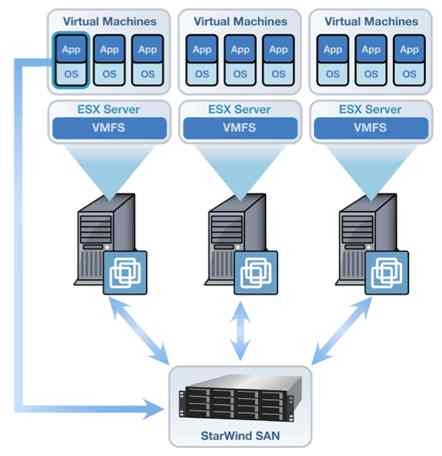“VMware is the global leader in virtualization, delivering virtualization and cloud infrastructure solutions that reduce capital and operating expenses, improve agility, ensure business continuity and support green initiatives.”
Advantages of Virtualization
The advantages of switching to a virtual environment are plentiful, saving you money and time while providing much greater business continuity and ability to recover from disaster.
Reduced spending. For companies with fewer than 1,000 employees, up to 40 percent of an IT budget is spent on hardware. Purchasing multiple servers is often a good chunk of this cost. Virtualizing requires fewer servers and extends the lifespan of existing hardware. This also means reduced energy costs.
Easier backup and disaster recovery. Disasters are swift and unexpected. In seconds, leaks, floods, power outages, cyber-attacks, theft and even snow storms can wipe out data essential to your business. Virtualization makes recovery much swifter and accurate, with less manpower and a fraction of the equipment – it’s all virtual.
Better business continuity. With an increasingly mobile workforce, having good business continuity is essential. Without it, files become inaccessible, work goes undone, processes are slowed and employees are less productive. Virtualization gives employees access to software, files and communications anywhere they are and can enable multiple people to access the same information for more continuity.
More efficient IT operations. Going to a virtual environment can make everyone’s job easier – especially the IT staff. Virtualization provides an easier route for technicians to install and maintain software, distribute updates and maintain a more secure network. They can do this with less downtime, fewer outages, quicker recovery and instant backup as compared to a non-virtual environment.

Disadvantages of Virtualization
The disadvantages of virtualization are mostly those that would come with any technology transition. With careful planning and expert implementation, all of these drawbacks can be overcome.
Upfront costs. The investment in the virtualization software, and possibly additional hardware might be required to make the virtualization possible. This depends on your existing network. Many businesses have sufficient capacity to accommodate the virtualization without requiring a lot of cash. This obstacle can also be more readily navigated by working with a Managed IT Services provider, who can offset this cost with monthly leasing or purchase plans.
Software licensing considerations. This is becoming less of a problem as more software vendors adapt to the increased adoption of virtualization, but it is important to check with your vendors to clearly understand how they view software use in a virtualized environment to a
Possible learning curve. Implementing and managing a virtualized environment will require IT staff with expertise in virtualization. On the user side a typical virtual environment will operate similarly to the non-virtual environment. There are some applications that do not adapt well to the virtualized environment – this is something that your IT staff will need to be aware of and address prior to converting.
For many businesses comparing the advantages to the disadvantages, moving to a virtual environment is typically the clear winner. Even if the drawbacks present some challenges, these can be quickly navigated with an expert IT team or by outsourcing the virtualization process to a Managed IT Services provider. The seeming disadvantages are more likely to be simple challenges that can be navigated and overcome easily.